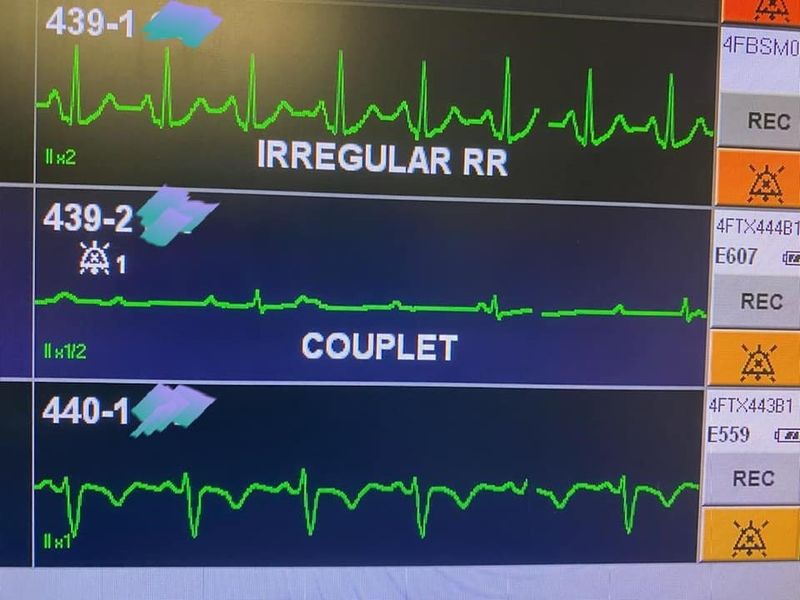BLOG: Room #439-2
I was rounding with a fellow recently. We usually round in late afternoon, early evening, after finishing the afternoon clinics.
The fellow and I were sitting on the walled booth in the hallway, before the computer, to review the case of the patient in room #439-1, on EPIC.

Above the computer was the Telemetry Computer Screens with EKG tracings. The first image here (Figure 1) shows the EKG tracings of patients in rooms 439-1, 439-2 and 440-1.
Being an EKG nerd myself, I was struck by the tracing of the person in room #439-2 — not our patient, but the neighbor of our patient.

My interest in EKG started in pre-clinical medical school years, which was covered in the physiology classes. I have studied EKG in-depth; that must have stemmed from the “engineer inside me,” as I explained in a prior post titled “The Engineer-Doctor.”
In that post, I told the story of a senior pediatric resident I worked under during my internship in my alma mater’s teaching hospital in the mid-1980s. That resident was an electrical engineer who then decided to study medicine!
So, when I saw the EKG tracing of the patient in room #439-2, I felt scared.
“My God, look at this EKG tracing,” I said to my fellow.
The fellow is a very smart, competent and well-informed physician, with 10 years of academic hospitalist practice before joining our endocrine program.
I said to him, “This patient has a compete third degree heart block and is quite bradycardic with very small QRS complexes.”
He agreed.
We rushed to the room. We were surprised to see the patient in room #439-2: A woman in her 60s or 70s, sitting comfortably on the bed.
“Ma’am, are you OK?" I asked.
She nodded yes.
We then rushed to the nursing station to “alarm them,” while they were huddling, doing their 7 p.m. shift sign-out.
They looked at me, having noticed that I looked upset.
They asked what was going on.
“The... the... the patient in 439-2..." I said.
They laughed.
"Oh, yes, you guys are endocrinologists?” one of the nurses said. “Don't worry, she is fine; she is going for a pacemaker in the morning."
I realized then that we were in the Cardiology Telemetry Step-Down Unit. The nurses here are so expert in EKGs.
With a friendly wink, one said, “Good catch though, for an endocrinologist.”
Then we all laughed.

A note: The top EKG tracing of the patient in room #439-2 (Figure 1) is on the first day (described above). The bottom tracing (Figure 2) is the EKG tracing of the same patient on the next day, after receiving the pacemaker. You may note the paced QRSs.
Collapse
